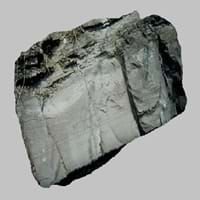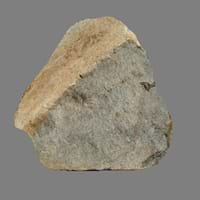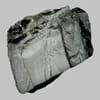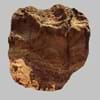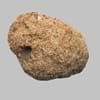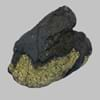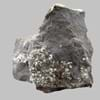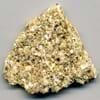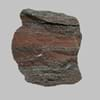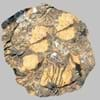Definition
A sedimentary rock, deposit of a submarine turbidity currents and are composed of layered particles
Lamprophyre is uncommon igneous rocks primarily occurring as dikes, lopoliths, laccoliths, stocks and small intrusions
Origin
European Foreland Basins
Unknown
Discoverer
Arnold H. Bouma
Unknown
Etymology
From Medieval Latin turbiditas, from Latin turbidus (turbid). Turbidity current is from 1939
From Greek lampros bright and shining + porphureos purple
Class
Sedimentary Rocks
Igneous Rocks
Sub-Class
Durable Rock, Soft Rock
Durable Rock, Medium Hardness Rock
Group
Not Applicable
Plutonic
Other Categories
Coarse Grained Rock, Fine Grained Rock, Opaque Rock
Coarse Grained Rock, Fine Grained Rock, Opaque Rock
Texture
Mud-rich, Sandy
Porphyritic
Color
Black, Brown, Green, Grey, Pink
Black, Bluish - Grey, Brown, Dark Greenish - Grey, Green, Grey
Durability
Durable
Durable
Scratch Resistant
Yes
Yes
Appearance
Dull and Banded
Dull, Banded and Foilated
Interior Uses
Bathrooms, Countertops, Decorative Aggregates, Flooring, Homes, Interior Decoration
Decorative Aggregates, Interior Decoration
Exterior Uses
As Building Stone, As Facing Stone, Paving Stone, Garden Decoration
As Building Stone, Office Buildings
Other Architectural Uses
Curbing
Curbing
Construction Industry
As Dimension Stone, Cement Manufacture, Construction Aggregate, for Road Aggregate, Making natural cement
As Dimension Stone, Cement Manufacture, for Road Aggregate, Making natural cement, Manufacture of Magnesium and Dolomite Refractories
Medical Industry
Not Available
Taken as a Supplement for Calcium or Magnesium
Antiquity Uses
Artifacts, Monuments, Sculpture
Artifacts, Monuments, Sculpture
Commercial Uses
Cemetery Markers, Creating Artwork
An Oil and Gas Reservoir, As a Feed Additive for Livestock, Gemstone, Metallurgical Flux, Production of Lime, Soil Conditioner, Source of Magnesia (MgO)
Types
Not Available
Minette, Alnoite, Camptonite, Monchiquite, Fourchite, Vogesite, Appinite and Spessartite
Features
High silica content, Host Rock for Lead
Always found as volcanic pipes over deep continental crust, Host rock for Diamond, Is one of the oldest rock, Surfaces are often shiny
Archaeological Significance
Famous Monuments
Not Available
Not Available
Famous Sculptures
Not Available
Not Available
Formation
Turbidite is a type of sedimentary rock formed when a river carries or transports pieces of broken rock as it flows. These particles then settle down and are subjected to high temperature and pressures hence forming Turbidite.
Lamprophyre formation takes place deep beneath the Earth’s surface at around 150 to 450 kilometres, and are erupted rapidly and violently.
Mineral Content
Coesite, Quartz, Sand
Amphibole, Carbonate, Garnet, Micas, Olivine, Phlogopite, Pyroxene
Compound Content
CaO, Carbon Dioxide, MgO
Aluminium Oxide, NaCl, CaO, Iron(III) Oxide, FeO, Potassium Oxide, MgO, MnO, Sodium Oxide, Silicon Dioxide, Titanium Dioxide
Types of Metamorphism
Not Applicable
Cataclastic Metamorphism, Impact Metamorphism
Types of Weathering
Biological Weathering, Chemical Weathering, Mechanical Weathering
Biological Weathering
Types of Erosion
Chemical Erosion, Coastal Erosion, Sea Erosion, Water Erosion, Wind Erosion
Chemical Erosion, Water Erosion, Wind Erosion
Grain Size
Fine to Coarse Grained
Fine to Coarse Grained
Fracture
Splintery
Conchoidal
Streak
White, Greenish White or Grey
White
Porosity
Very Less Porous
Very Less Porous
Luster
Metallic
Subvitreous to Dull
Compressive Strength
Not Available
Cleavage
Disjunctive
Conchoidal
Toughness
2.4
Not Available
Specific Gravity
2.46-2.73
2.86-2.87
Transparency
Opaque
Translucent to Opaque
Density
1.6-2.5 g/cm3
2.95-2.96 g/cm3
Specific Heat Capacity
Not Available
Resistance
Heat Resistant
Heat Resistant, Impact Resistant
Deposits in Eastern Continents
Asia
Not Available
Russia
Africa
Western Africa
Angola, Botswana, Cameroon, Ethiopia, South Africa
Europe
Austria, Belarus, Romania, Switzerland, United Kingdom
England, Hungary, Iceland, United Kingdom
Others
Not Available
Antarctica, Greenland
Deposits in Western Continents
North America
Canada, USA
Canada, Mexico, USA
South America
Brazil, Colombia
Argentina, Colombia, Ecuador
Deposits in Oceania Continent
Australia
New Zealand, Western Australia
New South Wales, New Zealand, Queensland, South Australia, Western Australia
All about Turbidite and Lamprophyre Properties
Know all about Turbidite and Lamprophyre properties here. All properties of rocks are important as they define the type of rock and its application. Turbidite belongs to Sedimentary Rocks while Lamprophyre belongs to Igneous Rocks.Texture of Turbidite is Mud-rich, Sandy whereas that of Lamprophyre is Porphyritic. Turbidite appears Dull and Banded and Lamprophyre appears Dull, Banded and Foilated. The luster of Turbidite is metallic while that of Lamprophyre is subvitreous to dull. Turbidite is available in black, brown, green, grey, pink colors whereas Lamprophyre is available in black, bluish - grey, brown, dark greenish - grey, green, grey colors. The commercial uses of Turbidite are cemetery markers, creating artwork and that of Lamprophyre are an oil and gas reservoir, as a feed additive for livestock, gemstone, metallurgical flux, production of lime, soil conditioner, source of magnesia (mgo).
